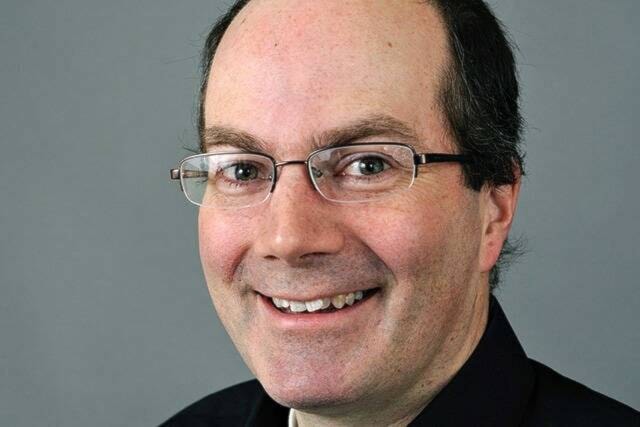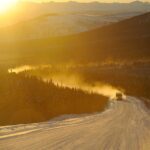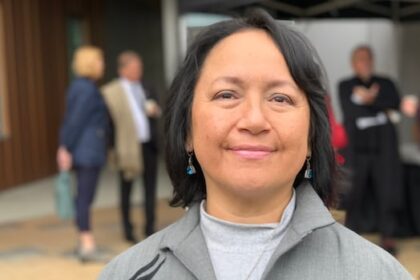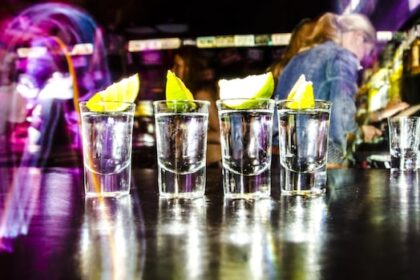Last week, there were two kinds of people in the Yukon: those who had gold hidden in the outhouse, and those who didn’t. The latter scrolled their phones nervously as trade and geopolitical mayhem caused their retirement funds to dive like a raven spotting a Kentucky Fried Chicken box. We don’t know what Tagish equivalent of “Eureka!” Keish exclaimed — or his sister Shaaw Tláa if you believe that version of the story — when he spotted gold in the bottom of Rabbit Creek in 1896. But you can be sure that Yukon goldbugs felt a similar emotion to Skookum Jim and Kate Carmack (their English names) last week when gold surged to over US$3,000 per ounce. Some newcomers to the Yukon may not follow the gold price as closely as the rest of us, so here’s a quick look at the numbers. Back in March 2001, according to the World Gold Council, gold was around US$260 per ounce or $409 Canadian (all figures below will be in Canadian dollars per ounce unless noted). As I wrote this last weekend, gold was US$3,014 or a lunking $4,327 in Yukon money. These days, just because your theories about the end of the Western economic order make people uncomfortable at parties doesn’t mean you’re a bad investor. I have witnessed many campfire debates between gold investors and mainstream investors over the years. Suppose you were born in 2001. Your Yukon grandparents gave you a shiny Maple Leaf gold coin worth $409. Your Outside grandparents went to a professional financial advisor and invested $409 in a carefully diversified fund tracking the TSX 60 Canadian stock market index. Today that gold coin would be worth $4,327. Your stocks would be worth $1,388, plus whatever measly dividends your fund paid net of fees over the years. If your Outside grandparents were risk-averse and put your money in ultra-safe Canadian treasury bills, your birthright gift would now be worth around $750. Outside grandparents aren’t the only ones finding their skis crossed by gold’s surge. When economic development officials gather in the Yukon, placer mining is like the weird foreign exchange student. Everyone wants to talk to the cool kids in tech, light manufacturing or high-end eco-tourism. The government seldom hires fancy consultants to run visioning exercises for the placer mining industry. Politicians only talk about it when they are feeling nervous in Dawson City and trot out the usual lines about placer mines being as central to our economy as the family farm is to Saskatchewan’s. Bigger hard-rock gold mines are also important to the Yukon’s economy. Or, to be more precise, they are when they are actually operating. Speaking of Eagle Gold, if you slide your iPhone zoom to 11 and squint, then gold’s surge is good news for the troubled mining property. On March 31, 2024, there was $225 million in gold inventory at Eagle. That is now worth $99 million more, if you value it at today’s higher gold prices. The problem is that “inventory” to mining accountants includes the gold specks that are still stuck inside the cyanide landslide. Someone will have to pay to repair the mine and extract it. One way to look at the situation is that you are an investor, via the Yukon government, in Eagle Gold. They have advanced $105 million so far, or $2,270 per Yukoner, to the receiver to manage the disaster and repair the mine. The gold inventory is now worth $7,012 per Yukoner, up from $4,865 a year ago. So higher gold prices increase the possibility of getting back some, or maybe even all, of the money invested by the Yukon government. Assuming they can find someone who thinks gold prices will stay high and wants to buy a used mine under extreme political and First Nation scrutiny. By this point, probably even the Outside grandparents will be wondering how they can get in on the gold action. You could put in a $1 bid to buy Eagle, conditional on government grants to cover start-up costs. But that’s a lot of work and involves getting shouted at by large angry crowds at public consultations. So I have other suggestions for you. First, find all that gold-nugget jewelry grandma gave you. It is now worth literally ten times more than it used to be. Second, make sure all the members of the family who have gold stashed away have written down where it is. You don’t want to be one of those families that hears years later that the people who bought Aunt Edna’s house found 20 Maple Leaf gold coins hidden in the garage wall. The third suggestion is for those who really want to put cubicle life in the capital city behind them: buy a placer mine. Try googling “Yukon placer mines for sale.” If they haven’t been snapped up already, how about 42 contiguous claims on Lucky Creek? The realtor’s pitch is compelling: “working permits in place until 2028,” “not actively mined since 1901, so now considered virgin ground,” “20ft to 30ft to bedrock,” and “creek is rich but spotty.” Others advertise “turnkey” operations suitable for newbies, or properties close to those featured in reality TV shows. Another offers “grandfathered dwelling rights” while one offers a D6 cat, Ford pickup and new propane fridge in the cabin. Others highlight the rustic charm of crumbling gold-rush-era cabins or great viewscapes. Plus, both major national parties are now promising to kill the carbon tax. This is a big deal when you realize your new D6 cat has a 341-litre fuel tank. Keep in mind that you may not be the only bidder. We can expect 2025 to be an even bigger year than 2024, which set a $230-million production record for the territory’s 156 active placer operations according to the Yukon Geological Survey. You’ll also have to deal with the Yukon’s elaborate and unpredictable permitting process. The Yukon News reported on March 5 that placer mining permits are more logjammed than usual at YESAB and the Water Board. You can’t cash in on gold prices, or create Yukon jobs, if you don’t have a permit. The News reported that one miner has been in the queue since April 2023. It is ironic that the industry that most Whitehorse bigwigs wrote off as hopelessly old-fashioned now turns out to be a big hedge against the US economic campaign against Canada. The more uncertain the world economy gets, and the lower the Canadian dollar goes, the better it is for placer mining here in the Yukon. Permits permitting, of course. Keith Halliday is a Yukon economist and the winner of the 2022 Canadian Community Newspaper Award for Outstanding Columnist. His most recent book Moonshadows, a Yukon-noir thriller, is available in Yukon bookstores.
Thursday, 6 Nov 2025
Canada – The Illusion
Search
Have an existing account?
Sign In
© 2022 Foxiz News Network. Ruby Design Company. All Rights Reserved.
You May also Like
- More News:
- history
- Standing Bear Network
- John Gonzalez
- ᐊᔭᐦᑊ ayahp — It happened
- Creation
- Beneath the Water
- Olympic gold medal
- Jim Thorpe
- type O blood
- the bringer of life
- Raven
- Wás’agi
- NoiseCat
- 'Sugarcane'
- The rivers still sing
- ᑲᓂᐸᐏᐟ ᒪᐢᑿ
- ᐅᑳᐤ okâw — We remember
- ᐊᓂᓈᐯᐃᐧᐣ aninâpêwin — Truth
- This is what it means to be human.
- Nokoma












